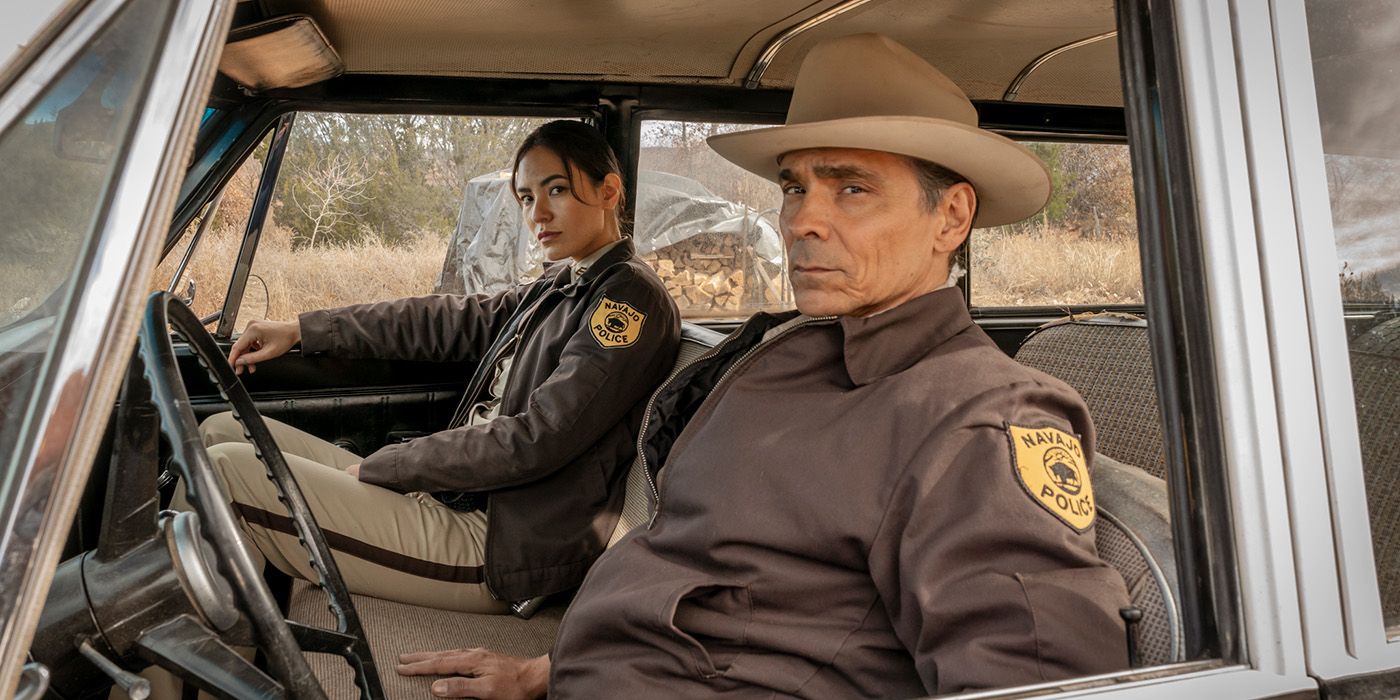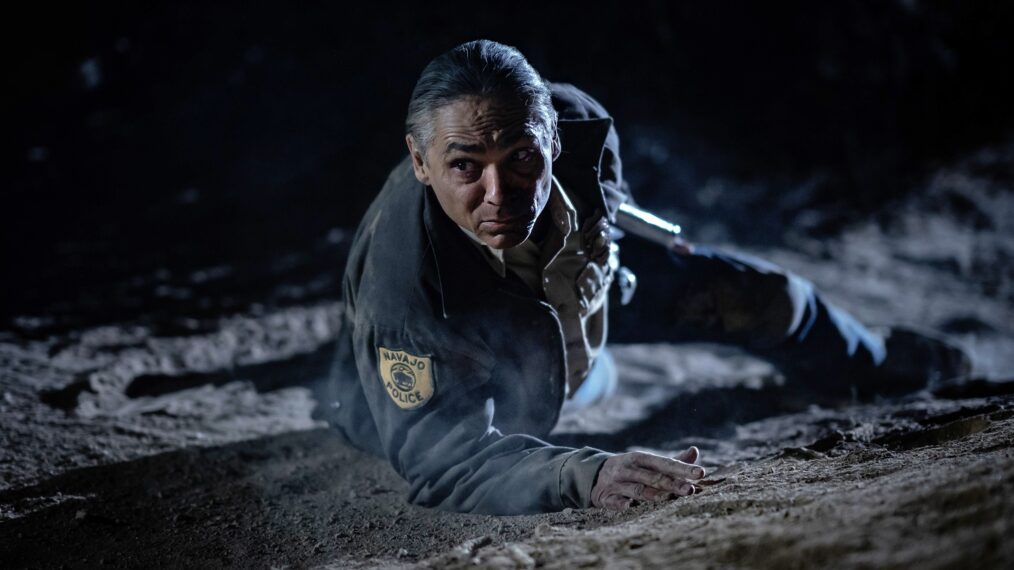AMC+ Navajo Thriller Dark Winds Emerges as TV’s Next Big Obsession — More Atmospheric Than True Detective, More Haunting Than Shetland
For decades, the crime drama has been one of television’s most enduring genres. From HBO’s True Detective with its Southern Gothic horror to the BBC’s windswept Shetland, audiences have been drawn to tales of flawed detectives chasing elusive killers across haunted landscapes. But in 2025, a new contender has exploded onto the scene — and it’s unlike anything viewers have seen before. AMC+’s Dark Winds, a Navajo crime thriller set against the scorched mesas of the 1970s Southwest, is being hailed as “the most atmospheric series of the year,” “a revelation in crime storytelling,” and even “a cultural milestone.”
What begins as a taut whodunit quickly transforms into something richer and more profound: a noir masterpiece rooted in Navajo identity, history, and resilience. And in the words of one critic, “Where True Detective gave us despair, Dark Winds gives us survival.”
A Story Rooted in the Desert Southwest
Based on Tony Hillerman’s acclaimed Leaphorn & Chee novels, Dark Winds transports viewers deep into Navajo Country at the height of the 1970s. The series follows tribal police lieutenant Joe Leaphorn, portrayed by Zahn McClarnon (Westworld, Reservation Dogs), and his ambitious young deputy Jim Chee, played by Kiowa Gordon.
Together, they are drawn into a tangle of brutal murders, unexplained disappearances, and conspiracies that stretch far beyond the reservation’s borders. Yet unlike conventional police procedurals, the crimes here are not just puzzles to be solved — they are mirrors reflecting the traumas, traditions, and tensions of Navajo life under constant outside pressure.
The desert itself becomes a character. The show’s cinematographers capture wide, painterly landscapes where red sandstone cliffs bleed into endless skies, dust storms rage like omens, and silence carries the weight of centuries. In one unforgettable shot, Leaphorn walks across a barren plain at sunset, his silhouette stark against a horizon of fire. “Every frame looks like it belongs in a gallery,” one fan wrote on X (formerly Twitter).

Zahn McClarnon’s Defining Performance
At the heart of Dark Winds is Zahn McClarnon, delivering what critics are calling the defining performance of his career. As Leaphorn, he is both stoic and haunted — a man bound by duty to uphold justice but also tethered to ancestral traditions and unspeakable personal loss.
With the smallest flicker of expression, McClarnon conveys storms of emotion: suspicion, grief, resilience, and an unspoken defiance. “This isn’t just about solving crimes,” McClarnon explained in a recent interview. “It’s about who these people are, where they come from, and what justice means in their world.”
Opposite him, Kiowa Gordon’s Jim Chee embodies a younger generation caught between modern ambitions and Navajo heritage. Their uneasy partnership adds depth to the narrative, with every case becoming not just a question of guilt or innocence, but of survival and identity.
A Breakthrough for Representation
Dark Winds isn’t merely another addition to television’s crime canon. It’s a groundbreaking moment for Indigenous representation. With a primarily Native cast, Indigenous showrunners, and guidance from Navajo cultural advisors, the series tells its story from the inside out.
For decades, Native characters were reduced to caricatures in Westerns, used as background scenery or stereotypes. Here, they are fully realized — detectives, suspects, victims, families — presented with nuance and humanity. Even small details, from the cadence of Navajo language to the rituals performed in quiet moments, root the show firmly in cultural authenticity.
“This series flips the narrative,” Gordon said in press notes. “For so long, Native stories weren’t told by us. Dark Winds is ours. It matters.”

The Critics Weigh In
The reviews have been glowing. The Guardian hailed it as “a brooding Navajo murder mystery that demands to be binged,” while Variety described it as “a cultural reckoning wrapped in a noir thriller.” The Telegraph praised its “delicious slow-burn tension,” comparing it favorably to Doctor Foster in terms of psychological sharpness.
On Rotten Tomatoes, the show currently boasts a score in the mid-80s, with audience ratings climbing even higher. “It’s as addictive as it is important,” one critic summarized.
The Social Media Frenzy
But it’s on social media where Dark Winds has exploded into a phenomenon.
“Every twist feels like a sandstorm — sudden, blinding, impossible to escape,” one Reddit user posted, earning thousands of upvotes.
Another wrote: “Finally, a crime series that doesn’t use Native culture as decoration but makes it the heart of the story. Dark Winds is everything I wanted and more.”
On X, the hashtag #DarkWindsAMC has been trending, with viewers confessing they “binged the entire season in one sitting” and describing it as “the most haunting TV experience since True Detective Season 1.”
Comparisons to True Detective and Shetland
The comparisons have come thick and fast. Like True Detective, Dark Winds thrives on atmosphere, psychological intensity, and morally complex detectives. Like Shetland, it uses an isolated landscape as both setting and metaphor.
But the show also transcends those influences. Where True Detective gave us the nihilism of the Louisiana swamps, and Shetland gave us bleak Scottish isolation, Dark Winds offers something uniquely Southwestern: a story about survival, identity, and cultural memory that feels at once ancient and urgently modern.
“True Detective showed us despair,” wrote one critic. “Dark Winds shows us endurance.”
A Triumph of Style and Substance
Visually, the show is stunning. Director Chris Eyre leans into contrasts: harsh sunlight against shadowy secrets, wide-open spaces against claustrophobic human dilemmas. Each frame is meticulously composed, whether it’s the gleam of headlights cutting across a desert road or the eerie stillness of an abandoned mine.
The soundtrack mixes haunting original compositions with period-accurate 1970s rock, while subtle echoes of Navajo chants drift through key moments, reminding audiences that this is sacred ground layered with centuries of meaning.
Why Dark Winds Matters
Beyond the suspense and spectacle, Dark Winds carries weight. It proves that Indigenous voices don’t just belong in Hollywood — they elevate it.
For Navajo communities, the series is validation, finally seeing themselves represented with dignity and depth. For global audiences, it’s an invitation to expand their understanding of what crime drama can be.
“This is more than television,” McClarnon said. “It’s about showing the world that our stories, our lives, and our struggles deserve the same space, the same spotlight.”
From Cult Gem to Mainstream Must-Watch
When Dark Winds first premiered, it seemed destined to be a cult gem. But word of mouth has turned it into a sensation. Viewers who stumbled upon it have become evangelists, spreading the word across forums, TikTok edits, and binge-watch threads.
Now, critics and fans alike are calling it the most essential crime drama of 2025. “Don’t sleep on this one,” warned one viral post. “Because if you do, you’ll miss the best thing on TV this year.”
Final Word
In an era saturated with crime procedurals, Dark Winds is a revelation. It doesn’t just unravel mysteries; it unravels people, places, and histories. With its blend of noir intensity, cultural authenticity, and powerhouse performances, it stands as a landmark not just for AMC+, but for television as a whole.
True Detective gave us Southern Gothic despair. Shetland gave us windswept isolation. Now, Dark Winds has given us something new: Navajo soul, Southwestern grit, and a story that cuts as deep as the desert wind.
A shadowy storm is here — and it’s only just beginning.